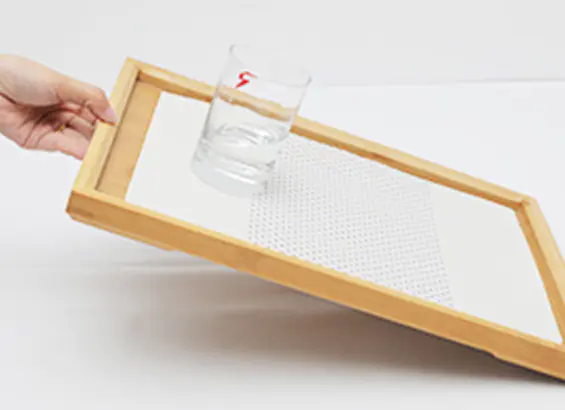1. Anti-slip principle
The basic principle of anti-slip paper is to make it have good anti-slip properties through surface treatment. This treatment usually involves adding a special coating or texturing to the surface of the paper to change the physical properties of the paper surface. For Airline Anti-Slip Paper Placemat, its anti-slip mechanism is based on this principle. Through special surface treatment, the contact area and friction between the tableware and the tabletop are increased, thereby achieving an anti-slip effect.
2. Surface coating treatment
Coating materials:
The anti-slip coating of Airline Anti-Slip Paper Placemat usually uses polymer materials such as polyurethane and epoxy resin. These materials have good adhesion and wear resistance, and can form a strong and durable anti-slip layer on the surface of the paper.
Coating process:
The coating process is the key to ensure the anti-slip effect. During the manufacturing process, the special anti-slip coating is evenly applied to the surface of the paper, and through drying, curing and other processes, the coating is closely combined with the paper to form a smooth and wear-resistant anti-slip surface.
Coating characteristics:
The anti-slip coating not only has an anti-slip function, but also improves the wear resistance and tear resistance of the paper. At the same time, the selection of coating materials and the optimization of processes can also ensure that the placemat can still maintain a good anti-slip effect in a humid environment.
3. Texture design
Texture type:
The surface texture design of Airline Anti-Slip Paper Placemat is varied, including concave-convex texture, grid texture, diamond texture, etc. These texture designs are designed to increase the roughness of the paper surface, thereby increasing the friction between the tableware and the tabletop.
Texture depth and density:
The depth and density of the texture have an important impact on the anti-slip effect. Too shallow texture may not provide enough friction, while too deep texture may affect the flatness and aesthetics of the placemat. Therefore, during the manufacturing process, the depth and density of the texture need to be precisely controlled to ensure the best anti-slip effect.
Combination of texture and coating:
The combination of texture and coating is the key to the anti-slip mechanism. By optimizing the coating material and process, it is ensured that the coating can fully penetrate into the texture to form a strong bond. In this way, the coating is not easy to fall off even under high-intensity friction, thus ensuring the long-lasting anti-slip effect of the placemat.
4. Anti-slip performance test
In order to ensure that the anti-slip performance of Airline Anti-Slip Paper Placemat meets the standards, manufacturers usually conduct a series of performance tests. These tests include but are not limited to:
Static friction coefficient test: measure the static friction coefficient between the placemat and the tableware or tabletop to evaluate its anti-slip performance.
Abrasion resistance test: test the wear resistance and durability of the placemat by simulating actual usage scenarios.
Tear resistance test: test the tear resistance of the placemat when subjected to external forces.
Wet environment test: test the anti-slip performance of the placemat in a humid environment to ensure that it can maintain a good anti-slip effect in various environments.
5. Application scenarios and advantages
Airline Anti-Slip Paper Placemat has been widely used in multiple scenarios due to its excellent anti-slip performance. For example, on an airplane, it can effectively prevent tableware from slipping and improve the dining experience of passengers; in a restaurant or at a family table, it can also protect the tabletop from scratches and stains from tableware. In addition, due to its lightness, easy to carry and environmentally friendly features, Airline Anti-Slip Paper Placemat is also an ideal choice for traveling, picnics or outdoor activities.





 English
English Español
Español





 No.389 Daifeng Road, Yuantong, Haiyan Jiaxing, Zhejiang, China
No.389 Daifeng Road, Yuantong, Haiyan Jiaxing, Zhejiang, China 86-573-86161678
86-573-86161678 86-573-86156282
86-573-86156282

